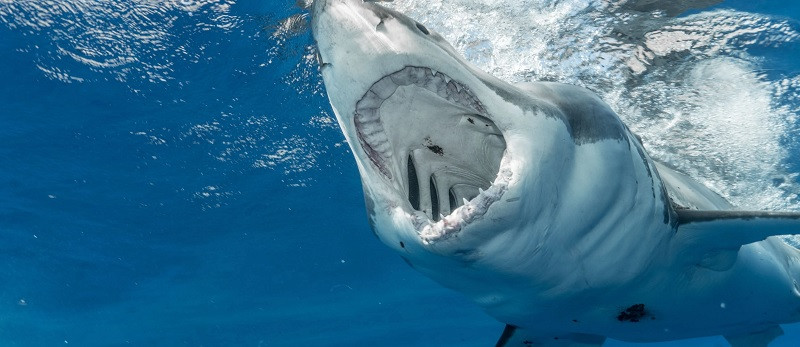
In today’s society there is a tendency to use the term anxiety to describe a negative state, an unpleasant sensation, which has an impact on the individual’s life and is not adaptive.
We are used to hearing about anxiety as a negative state that affects a person’s functionality, preventing them from leading a normal life. In diagnostic manuals of psychological disorders such as DSM 5 or ICD 10, anxiety appears as a group of disorders related to different causes that cause anxiety.
But… Is the feeling of anxiety always maladaptive? Does it always have a negative impact, potentially developing a disorder? In this article we will present the theory of predatory imminence a, which describes a state of anxiety, presented in certain circumstances, that can be functional for the individual, thus avoiding negative consequences.
What is the Theory of Predatory Imminence?
As we have already pointed out previously, we tend to link anxiety with a negative state, which we want to avoid, which does not bring anything good and only affects our functionality, creating discomfort.
Fanselow and Lester, with their theory of predatory imminence, presented a new vision of anxiety implying and demonstrating that this, sometimes, can become functional for the individual, preventing further damage from occurring.
This theory is presented from a biological perspective; The authors describe an evolution of individuals throughout history (phylogenetic), which allows them to adapt to the different dangers that have arisen depending on the way of life, depending on the context. They mention different sensations such as fear, intuition, perception of danger or the aforementioned anxiety, which can help the person and even prevent death.
The dangers that we currently face as a society have varied compared to those that occurred in previous times For example, in prehistoric times we were more likely to die from a lion attack, but today, with the change in our way of life, we are more likely to be attacked in the street. Therefore, for anxiety to be adaptive, it must adapt over time and vary according to the dangers that we are most likely to encounter.
Therefore, taking into account the contribution of Fanselow and Lester, anxiety could sometimes be seen as a marker of future danger, thus allowing the individual to act and avoid major problems. Anxiety acts as a defensive behavior, being one of the most effective, keeping us alert of possible dangers in the future.

Given the adaptive function that anxiety can have depending on the occasion, we should not simply try to make it disappear, eliminate it, but rather The appropriate thing would be to look at what this feeling of anxiety is signaling because it appears and thus be able to act according to future events that may happen.
It would not be functional not to show anxiety in situations where our life could be threatened. For example, if we want to cross a street, it will not be adaptive to cross without looking if we know that this could lead to us being run over. Therefore, in this situation, the anxiety of a possible collision would alert us to the future danger of being hit, causing us to stop and look for cars coming to avoid suffering an accident.
Continuum of predatory imminence
The continuum of predatory imminence It was described by Fanselow and Lester as the prey’s perception of the probability of being consumed by a predator In other words, predatory imminence is directly correlated with the feeling of danger, for example, a greater predatory imminence would entail a greater feeling of danger of being hunted by the predator.
The authors divide the continuum into phases, observed by carrying out laboratory studies with rats, results that have been proven to be extrapolated to situations in the natural environment.
The continuum will present the predatory imminence, perceived threat level, in a dimensional manner. That is, from least to most perceived danger. In the axis of predatory imminence, from low to high, three types of defense phases or defense stage will be presented, which will be activated by certain environmental stimuli, showing overt defensive behavior related to the perceived dangerous situation. Finally, reference is also made to a psychological construct, linked in the same way to each stage of defense.
At the lowest level of predatory imminence, the change in eating pattern and cautious approach will be presented as changes in manifest responses, linked to the pre-encounter defense stage, where the psychological construct or present state is anxiety or worry.
With a higher degree of predatory imminence, we will move on to the post-encounter defense, with overt behaviors such as immobilization, enhancement of reflexes and analgesia (the non-sensation of pain). In this stage of defense, the psychological state shown is the fear.
Finally, in the last stage of defense, where the predatory imminence, the feeling of danger is higher the defense presented would be circa-strike, related to the state of panic, with manifest behaviors such as bursting of activities, escape behavior and attack.
Manifest behaviors according to the level of predatory imminence
At the lowest level of predatory imminence, in the state of pre-encounter defense, as the name indicates, the behavior would be activated by the perception of possible danger, that is, in the face of an attack situation that is not yet present. The feeling will be anxiety, with adaptive behaviors of cautious action, trying to reduce risk factors and thus protect your life.
Next, In the post-encounter stage, with a feeling of moderate threat, the overt behavior will tend towards immobilization, to stay frozen. A state of fear will be displayed upon detection of the threat, although at this point the attack is not yet immediate or certain.
In the phase of highest predatory imminence, where the danger situation is highest, the defense stage will be called, as we had already mentioned, circa strike defense. In this last phase, in which there is already direct contact with the threatening stimulus, the overt defensive behavior is already more active showing very variable behaviors, such as biting, jumping or escape behaviors.
As we have pointed out, in the pre-encounter defense phase, where the feeling of threat or danger is not as high, there is more flexibility in overt behaviors, acting mostly by trial and error. On the other hand, when the danger is already present, in the circa strike defense phase, with a higher level of predatory imminence, we will no longer act by trial and error, but rather pre-programmed behaviors will be carried out, which are known to have a better result. effective in the face of present danger.
Innate mechanism of action
Given the information presented in the previous section, we will say that in the situation of maximum perception of danger, where there is already direct contact with the threatening stimulus, The activation of the subject’s brain mechanisms will be necessary, which instinctively select the innate defensive response that is most adaptive given the situation ; It will not be functional to waste time with trial-error tests.
It has been seen that learning through classical or Pavlovian conditioning can help select what kind of innate response is the most appropriate to certain sets of environmental stimuli.
Variables that influence predatory imminence
It has been proven, with the observation of animals in nature, that there are different variables that influence the feeling of predatory imminence; It is multifaceted, such as the spatial distance with the threat stimulus, time, the identity of the threat, etc. But it has been obtained that The psychological perception of how imminent the danger is is one of the variables that most influence the level of predatory imminence feeling of danger.
Therefore, with this model the authors would demonstrate that the psychological constructs of anxiety, fear and panic (which are generally conceived as unpleasant sensations), on certain occasions, where the danger is likely to appear in the imminent future or is already present , yes they would be useful to protect the individual and thus survive. They act as markers of threat or danger, activating different appropriate behaviors in the subject allowing a good adaptation to the situation.
These defense mechanisms initially involve, at a lower level of threat, more flexible behaviors, these becoming more predetermined and innate as the level of danger perceived in the situation increases, so that the most effective behavior is executed in a timely manner. faster, protecting the subject.
Responding to the questions posed in the introduction, after knowing the issues raised in the theory of predatory imminence, anxiety is not always maladaptive nor does it always have a negative impact on the individual. The authors have proven that in certain situations where the possibility of an attack occurring is real, feeling anxious, having a sense of danger or threat is functional, since it makes us alert and allows us to act, avoiding or being prepared for danger.








